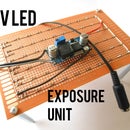Introduction: Simple Stereo Amplifier 2x1W - LM386
In this instructable I will show you how to make a 1 Watt stereo amplifier with LM386 single supply low voltage audio amplifier.
It can be powered by batteries with voltage range of 4V to 12V or by 12V wall adapter.
Step 1: Demonstration
In this video you can hear the amplifier.
Step 2: Parts List
For this instructable you will need:
1x - enclosure (KM60)
some perfboard
2x - LM386 single supply audio amplifier
1x - 7809 voltage regulator (9V)
2x - 1n4148 general purpose diode
1x - LED 5mm
1x - 1000µF electrolytic capacitor
2x - 220µF electrolytic capacitor
1x - 100µF electrolytic capacitor
3x - 100nF ceramic capacitor
1x - 10kΩ logarithmic(audio) stereo potentiometer - if you can't find logarithmic you can use linear as well
1x - 4.7kΩ resistor
1x - DC power jack
1x - 9V battery clip (6f22)
1x - 3.5mm stereo jack
1x - double pole double throw(DPDT) switch
Optional:
2x - 8pin DIP socket
1x - 6.3mm stereo jack
1x - Potentiometer knob
Step 3: Schematic and PCB
HOW IT WORKS
POWER SUPPLY
C1 and C2 are required by the regulator to ensure stability. C3 is for low frequency filtering. LED1 signalizes power. IC3 regulates the voltage to 9V. If a battery is used it is connected to BAT connector because connecting them to the regulator would waste power. BAT42 shottky diode may be used for D2 because it has lower voltage drop. I also advise to use a DPDT switch that switches batteries ON/OFF and adapter OFF/ON if not done so the amp would allways be on because of the allways connected batteries.
AMPLIFIER
The signals are fed from IN connectors to stereo potentiometers which control the voltage of the input and therefore the output volume. IC1 and IC2 amplify the signal. C5 and C7 filter high frequencies from the output. C6 and C4 protect the speakers from DC voltage which could appear by accident.(speakers don't like DC).
To make the schematic and board I used a free program CadSoft Eagle which I would recommend to anyone making schematics or PCBs.
Step 4: Drilling the Enclosure
Unfortunately I do not have any photos of this stage but all I can say is that everything went as usual except for the speaker holes. As I did not have a proper size drill bit I chose to drill many smaller holes around the circumference and then broke the excess plastic off. After that I filed the holes so they resemble a circle.
Step 5: Wiring Diagram
Now comes the fun part of wiring all the components that will be attached to the enclosure. The images should clarify it.
Step 6: Conclusion
For me this was a fun project, especially drilling of the speaker holes. If you manage to build this project don't forget to post your results into the comments.






